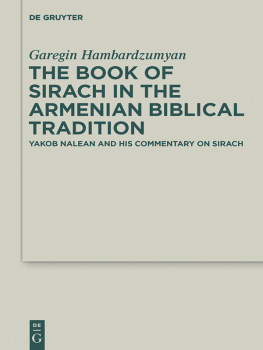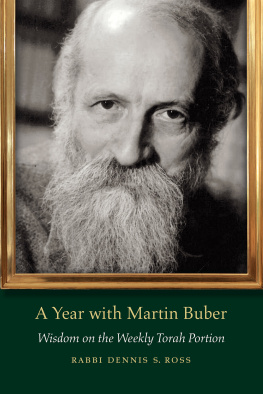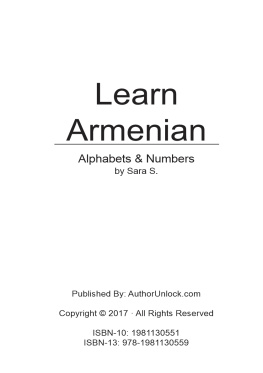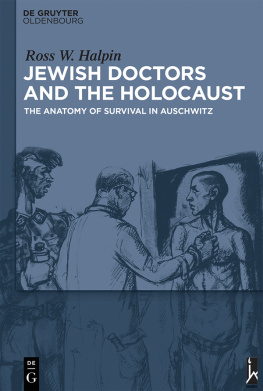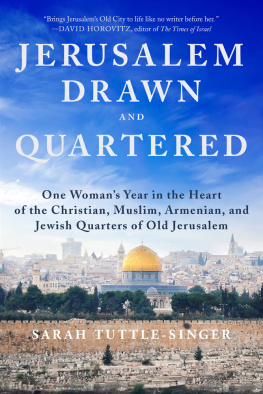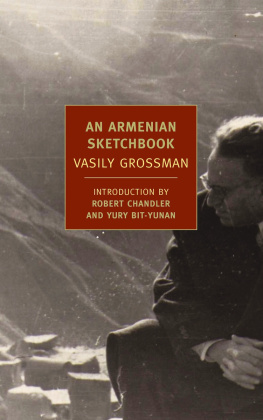Sarah M. Ross - Armenian and Jewish Experience between Expulsion and Destruction
Here you can read online Sarah M. Ross - Armenian and Jewish Experience between Expulsion and Destruction full text of the book (entire story) in english for free. Download pdf and epub, get meaning, cover and reviews about this ebook. year: 2021, publisher: De Gruyter, genre: Home and family. Description of the work, (preface) as well as reviews are available. Best literature library LitArk.com created for fans of good reading and offers a wide selection of genres:
Romance novel
Science fiction
Adventure
Detective
Science
History
Home and family
Prose
Art
Politics
Computer
Non-fiction
Religion
Business
Children
Humor
Choose a favorite category and find really read worthwhile books. Enjoy immersion in the world of imagination, feel the emotions of the characters or learn something new for yourself, make an fascinating discovery.

- Book:Armenian and Jewish Experience between Expulsion and Destruction
- Author:
- Publisher:De Gruyter
- Genre:
- Year:2021
- Rating:4 / 5
- Favourites:Add to favourites
- Your mark:
- 80
- 1
- 2
- 3
- 4
- 5
Armenian and Jewish Experience between Expulsion and Destruction: summary, description and annotation
We offer to read an annotation, description, summary or preface (depends on what the author of the book "Armenian and Jewish Experience between Expulsion and Destruction" wrote himself). If you haven't found the necessary information about the book — write in the comments, we will try to find it.
Sarah M. Ross: author's other books
Who wrote Armenian and Jewish Experience between Expulsion and Destruction? Find out the surname, the name of the author of the book and a list of all author's works by series.
Armenian and Jewish Experience between Expulsion and Destruction — read online for free the complete book (whole text) full work
Below is the text of the book, divided by pages. System saving the place of the last page read, allows you to conveniently read the book "Armenian and Jewish Experience between Expulsion and Destruction" online for free, without having to search again every time where you left off. Put a bookmark, and you can go to the page where you finished reading at any time.
Font size:
Interval:
Bookmark:


- Sarah M. Ross, Regina Randhofer Broadening Perspectives. Introduction
- DIASPORA AND MINORITY ISSUES
- Identity and Migration
- Elad Lapidot Is Translation Diasporic? A Confrontation between Franz Rosenzweig and Yehuda Halevi
- Franz Rosenzweig and Translation
- Yehuda Halevi and Hybrid Language
- Conclusion
- Anush Yeghiazaryan Saint Vardans Day in the Diaspora and the Republic of Armenia: Similarities and Differences. The Use of Art, Literature, and Language in Celebrations
- Introduction
- Theoretical and Methodical Frame
- Vardan in the Context of Armenian History: Myth and Rituals
- Three Armenian Communities and Vardans Day Celebrations
- Conclusion
- List of Figures
- Heidy Zimmermann Yiddish Songs as an Identificatory Idiom in the Diaspora: Die schnsten Lieder der Ostjuden, Arranged by Darius Milhaud, Stefan Wolpe, and Alvin Curran
- The First Yiddish Songbook in Western Europe
- A Jewish-Hebrew-Provenal Hybrid
- Conglomerations of Musical Expression
- Sounds and Songs of Memory
- Appendix
- List of Figures
- Judith Cohen If you see me walking alone on the road: Sephardic Songs of Exile, Expulsion, Memory and Return
- Si ves ke me vo sola If you see me walking alone
- Hayizkor yaalat hakhen yedida Will her love remember the graceful doe?
- Singing Expulsion: Ea Judios Hey, Jews!
- Exile from Exile: Babylon and Spain.
- Expulsion, Exile, and Memory of Various Kinds
- Exile Without Leaving Physically
- The Ultimate Exile, We Remember: the Holocaust
- Returning: There is Indeed Life After Babylon.
- Returning to the Homeland which was itself Part of Exile: Spain
- List of Figures
- Elad Lapidot Is Translation Diasporic? A Confrontation between Franz Rosenzweig and Yehuda Halevi
- Experience of Alterity
- Arpine Maniero Jewish and Armenian Students at German Universities from the End of the Nineteenth Century and until the Outbreak of World War I
- Introduction
- The Students from the Russian Empire at German Universities: A Social Portrait
- Jewish and Armenian Student Mobilization in Associations
- Jewish and Armenian Students between Tsarist Discrimination and German Prejudices
- Conclusion
- Maciej Ws The Jews of Caucasus: Perception of Armenians in the German and Polish Travel Literature
- Education
- Trade
- State within a State
- Revolutionaries and Communists
- Stefan Hofmann, Theresa Eisele Natural Born Actors on the Screen: Das alte Gesetz (1923) and the Theatricality of the Modern Jewish Experience
- The Theatre of Acculturation
- A Journey through Theatre Historiography
- Debates about a Jewish Affinity to Theatre
- Conclusion
- Arpine Maniero Jewish and Armenian Students at German Universities from the End of the Nineteenth Century and until the Outbreak of World War I
- AGHET AND SHOAH
- Experience Memory Self-understanding
- Georg Wehse Between Armenian Praise and Zionist Critique: Henry Morgenthau and the Jews of the Ottoman Empire
- Introduction
- The Jewish Post
- The Jewish Ambassador and the Yishuv
- The Yishuv at the Outbreak of the World War
- 5 The American Ambassador and the Young Turks
- 6 The Morgenthau-Missions to Gibraltar
- Conclusion
- Harutyun Marutyan The Armenian Genocide and the Jewish Holocaust: Trauma and Its Influence on Identity Changes of Survivors and their Descendants
- ndercan Muti Memory in Motion: Armenian Youth and New Forms of Engagement with the Past
- Generations and Collective Memory
- Data and Methodology
- Hereditary Victimhood and The Problem of Agency
- We need a new approach, another method: Challenging the Victimhood Nationalism
- Civic Engagement with the Past: Making Room for the Other(s)
- Conclusive Remarks
- Georg Wehse Between Armenian Praise and Zionist Critique: Henry Morgenthau and the Jews of the Ottoman Empire
- Cultural Representations: Identity Constructions and Negotiation Processes
- Miranda Crowdus Collective Memory in Israeli Popular Music: (Re)constructions across Generations
- Herv Georgelin Historical Awareness in Zavn Bibrians Autobiographical Longer Fragment: A Rare Perception of both Armenian and Jewish Sufferings
- Concluding Remarks
- Birgit M. Krner Global Solidarity is Something to Warm the Cockles of Your Heart: Holocaust and Genocide in Ephraim Kishons Israeli Satire
- Kishon as a Hungarian Holocaust Survivor
- The Creation of a New Israeli Humor in Cooperation with his Translator Friedrich Torberg
- Humor as a Survival Strategy
- Irritating Passages
- Kishon on Genocide and the Possibilities of Intervention by the International Community
- Conclusion
- Lawrence Baron Persistent Parallels, Resistant Particularities: Holocaust Analogies and Avoidance in Armenian Genocide Centennial Cinema
- The Persistent Parallels to the Holocaust in Armenian Genocide Films
- Iconic Particularities in Centennial Cinema
- Conclusion
- Contributors
- Authors
- Editors
- Index of Subjects
- Index of Names
Font size:
Interval:
Bookmark:
Similar books «Armenian and Jewish Experience between Expulsion and Destruction»
Look at similar books to Armenian and Jewish Experience between Expulsion and Destruction. We have selected literature similar in name and meaning in the hope of providing readers with more options to find new, interesting, not yet read works.
Discussion, reviews of the book Armenian and Jewish Experience between Expulsion and Destruction and just readers' own opinions. Leave your comments, write what you think about the work, its meaning or the main characters. Specify what exactly you liked and what you didn't like, and why you think so.

